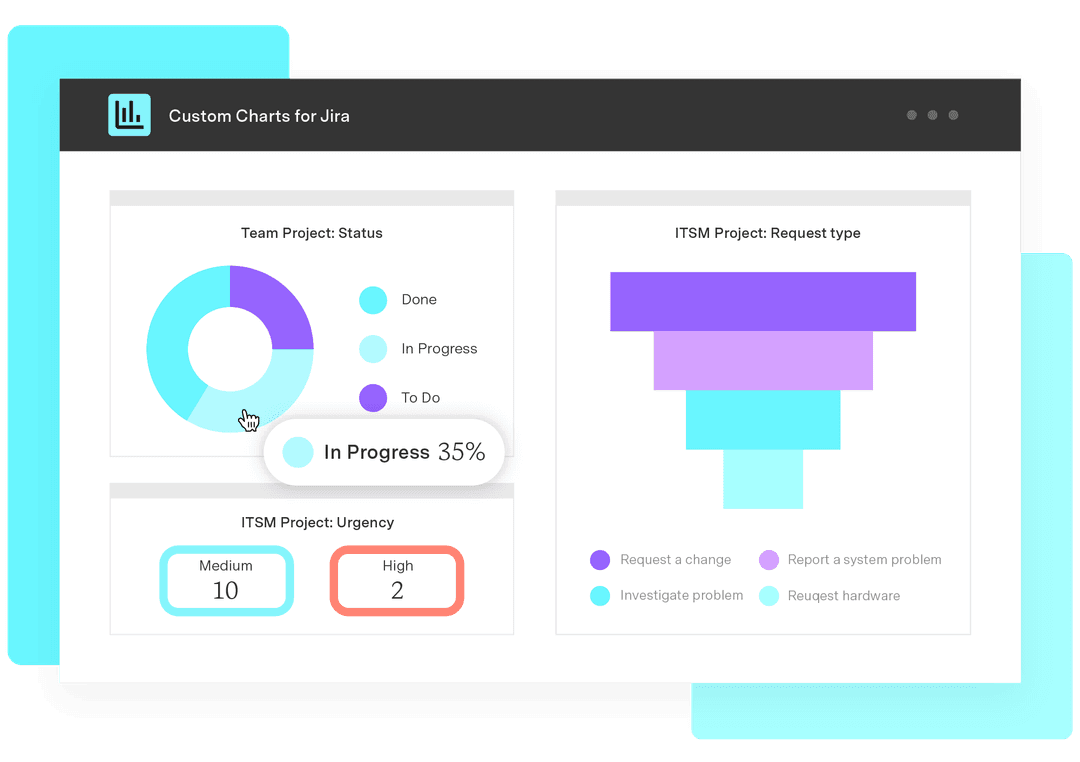Root cause analysis: Identify and solve underlying problems
Tempo Team
When a project runs into trouble, the most evident problem is often just a symptom of a deeper, hidden cause.
Root cause analysis (RCA) is a process that digs beneath the surface to uncover what really went wrong. A missed deadline or budget overrun might be obvious, but RCA pushes teams to trace the chain of events and conditions that led there.
This approach is especially useful in project management for revealing process gaps or resourcing issues. Once the project team identifies the underlying issue, they can implement solutions that prevent the problem from recurring.
Here’s an explanation of what root cause analysis is, plus why and how to conduct an RCA.
What does RCA mean in business?
Root cause analysis is a problem-solving technique that identifies the true source of a problem. Rather than asking, “How do we fix this?” RCA asks, “Why did this happen in the first place?”
For example, instead of simply patching the immediate problems in a failed software deployment, RCA might reveal the root cause was last-minute, untested configuration changes before release. The team can use this insight to implement a stricter approval and testing process for changes, addressing the underlying issue and preventing future failures.
RCA is particularly useful in complex environments where problems often have multiple contributing factors. Examining these factors and how they interact helps teams avoid superficial fixes that lead to repeated mistakes. Instead, RCA offers project managers a structured way to improve long-term performance across initiatives.
What is the goal of root cause analysis?
Root cause analysis is primarily intended to create lasting solutions by tackling problems at their source. Here are the other key objectives RCA helps teams achieve:
Prevent repeat issues by eliminating root causes
With RCA, teams can break the cycle of recurring problems. Instead of fixing surface-level symptoms, they identify and correct the underlying cause so the issue doesn’t return under different circumstances.
Strengthen processes through cause-and-effect insight
RCA uncovers weaknesses in workflows, communication, tools, or policies. These insights offer an opportunity to refine operations, leading to more resilient systems.
Minimize downtime and reduce the cost of failure
Unresolved issues can escalate, costing more over time in lost productivity and reactive fixes. RCA reduces this financial and operational impact by enabling teams to solve problems thoroughly the first time.
Support a culture of continuous improvement
Leaders who implement RCA promote a culture that values reflection and continuous improvement. They encourage curiosity over blame and structured learning over reactive problem-solving. This shift leads to more proactive teams.
How to perform a root cause analysis
Root cause analysis should be methodical and based on real-world evidence. Here’s a step-by-step guide to conducting an RCA that drives meaningful improvement:
1. Define the problem
Begin with an objective description of what went wrong to create a shared starting point for the team. Specify what happened, where and when it occurred, and who or what it impacted. Avoid assumptions and stick to observable facts. For example, “The deployment to production failed at 9:45 a.m. on March 2, resulting in 20 minutes of downtime for all users in Europe.”
This stage is also where early risk indicators often surface, helping teams connect the immediate issue to broader systemic vulnerabilities.
2. Gather data to understand scope and context
Collect logs, reports, screenshots, user feedback, timelines, and anything else that contextualizes the problem. Interview involved team members to capture any missing details.
Then, build a timeline of events. What happened leading up to the issue? What systems or decisions were involved? This context frames the problem within its operational environment.
3. Identify potential contributing factors
Bring together a cross-functional team to brainstorm factors that could have contributed to the incident. Consider communication breakdowns, technical glitches, and incorrect assumptions. Use fishbone diagrams or cause mapping techniques to visualize how different elements may have interacted.
4. Problem-solve the root cause
Use cause analysis tools to trace the issue back to its origin. For complex problems, Pareto analysis helps prioritize which causes to address first. For simpler issues, use the 5 Whys technique: Ask “Why?” five times to uncover underlying reasons. For example:
Why did the deployment fail? Because the config file was incorrect.
Why was it incorrect? Because a last-minute change wasn’t tested.
Why wasn’t the last-minute change tested? Because…
5. Distinguish the root cause(s) from contributing factors
Look for the factor that, if corrected, would prevent the problem from recurring. Root causes are often systemic – for example, poor documentation or missing safeguards. Distinguish between contributing factors and the root cause by asking, “If we fix this, can the issue still happen?”
6. Develop and implement corrective actions
Design solutions that address the root cause. For instance, if a failure occurred due to a skipped test, the fix isn’t simply to be more careful. Instead, you may decide to automate pre-deployment checks.
Assign clear ownership and timelines to each corrective action. Document changes so the team learns from the fix and applies it elsewhere.
7. Monitor results and refine as needed
After implementation, track the impact. Did the issue recur? Did the fix cause new problems? Use objective metrics to measure whether the corrective actions worked. If not, reexamine your assumptions. Sometimes, the real root cause is buried deeper than you thought.
Benefits of root cause analysis
Root cause analysis helps teams become faster and more resilient. Here are some of the benefits organizations gain when they commit to RCA:
Stops recurring problems at the source
When teams only address the symptoms of a problem, it’s bound to resurface. RCA breaks that cycle by solving issues at their origin. You don’t have to revisit it later, which saves time and keeps operations moving smoothly.
Strengthens team learning and shared understanding
Involving people from different functions in the RCA investigation helps teams learn how systems and roles interact. This shared understanding prevents future mistakes and strengthens collaboration, especially in high-pressure situations.
Clarifies complex decisions
RCA grounds decision-making in evidence. Data, timelines, and analyses help teams make informed choices, especially in complex environments where decisions could have lasting consequences.
Improves operational efficiency
Fixing problems at the root minimizes disruptions and reduces rework. Over time, this leads to leaner processes and more reliable outcomes. RCA also uncovers opportunities for system-wide improvements.
Lowers hidden and direct costs
Unsolved problems often lead to costs, such as lost productivity or customer churn. RCA reduces the visible and hidden costs of failure by preventing repeat incidents. It allows teams to solve problems once and for all, rather than repeatedly applying temporary solutions.
Increases customer satisfaction
Customers may not see the RCA process, but they feel its effects. When bugs disappear and problems don’t recur, customer trust grows. RCA builds reliability by permanently resolving customer-facing issues.
Builds a proactive culture
RCA shifts the focus from putting out fires to understanding how they started. Over time, this encourages a culture of continuous improvement. Teams begin to spot early warning signs and make proactive changes before issues escalate.
Turning RCA insights into action with Tempo
Identifying a problem’s root cause is only half the job. To see an impact, teams must prevent the issue from resurfacing. That’s where Tempo’s tools come in. They help teams close the loop between analysis and action by making the follow-up process visible and manageable.
Custom Charts for Jira
Once the team has identified the root causes and planned corrective actions, Custom Charts for Jira provides a central place to track changes. Teams can visualize progress and connect tasks directly to the problem at hand.
Timesheets
Addressing a root cause requires a coordinated team effort. Tempo’s Timesheets allows teams to log how much time they spend on these efforts. This data shows whether the solution was worth the investment and highlights how the team can prevent future incidents with less effort.
Capacity Planner
Many root causes stem from overloaded teams or unrealistic timelines. Capacity Planner lets managers see who has the bandwidth to take corrective actions without overburdening staff or delaying other priorities.
Together, these tools give teams a framework to move from insights to action, translating what they’ve learned from RCA into measurable improvements. Book a demo today.













































